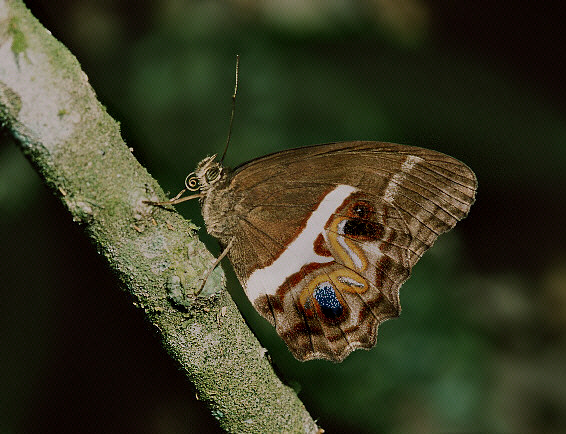
Introduction
There are 1100 known species of Satyrinae in the neotropical region. About 400 of these are placed in the Euptychiina. Butterflies within this tribe include the ‘ringlet’ genera Euptychia, Magneuptychia, Harjesia, Cissia, Caeruleuptychia, Magneuptychia, Harjesia etc; together with Oressinoma and the various ‘wood nymph’ genera i.e. Parataygetis, Posttaygetis and Taygetis. Most are inhabitants of the forest understorey and tend to fly close to the ground. They generally avoid sunlight and prefer to fly at dawn or on cloudy days when light levels and temperatures are low.
This species bears a strong superficial resemblance to members of the genus Amphidecta, but is in fact the sole member of the genus Rareuptychia. Rareuptychia clio is confined to a small region of lowland rainforest centred on the intersection of the national boundaries of Peru, Brazil and Bolivia.
Habitats
This butterfly seems to be restricted to primary rainforest at elevations between about 100-700m. It is found deep inside the forest in areas with high densities of palms and bamboos, and few grasses.
Lifecycle
Nothing is known of the early stages.
Adult behaviour
The butterfly depicted was encountered in early morning as the first rays of sunshine broke through the dawn mist. It settled several times on twigs, branches or tree trunks, and appeared to feed at algal or fungal growth.
